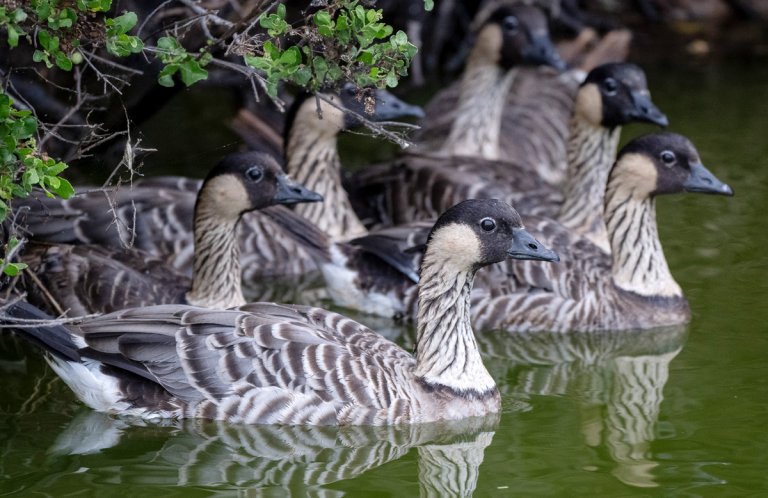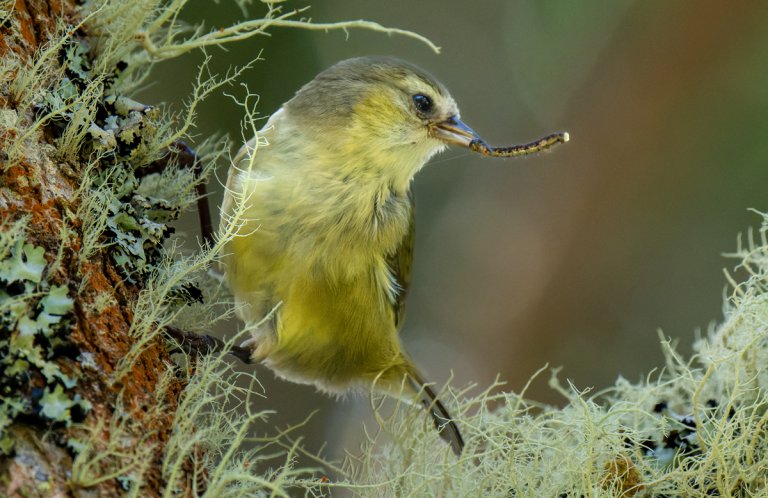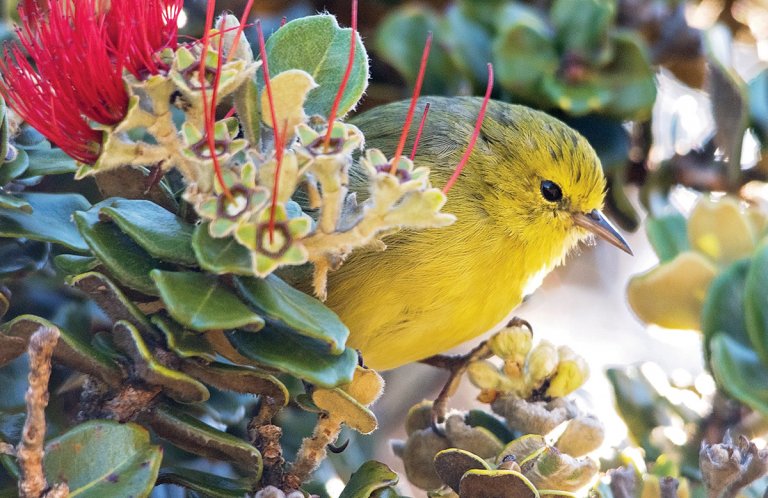About the Millerbird (Ulūlu)
The Millerbird (Ulūlu), a small, drab, Old World warbler, was once found solely on the rocky, 178-acre island of Nihoa in the remote Northwestern Hawaiian Islands. Due to this extremely limited range and its tiny population, the Millerbird was listed as Critically Endangered under the federal Endangered Species Act in 2000.
However, in a great conservation success story, 50 Millerbirds were translocated from Nihoa to Laysan (Northwestern Hawaiian Islands) in 2011-2012. Decades of monitoring and follow-up conservation work has resulted in a second, self-sustaining Millerbird population on Laysan, significantly decreasing this species' risk of extinction. In December 2023, the International Union for Conservation of Nature (IUCN) announced that the Millerbird was being downlisted to Endangered status.
Songs and Sounds
The Millerbird's sings a churring song; its call notes are harsh chips. Listen here:
Song:
Call:
Breeding and Feeding
The Nihoa Millerbird nests under the cover of dense native shrubbery. The species appear to be faithful to the same nesting site from year to year. Both members of a pair work to build their cup-shaped nest, made of grasses and stems, rootlets, and white seabird feathers, mainly from Laysan Albatross. The nest is lined with softer feathers and down.
Clutch size is typically two eggs, which the parents take turns brooding. Both parents also brood the young after they hatch, and take turns feeding them. Fledglings remain with their parents for a time after fledging, but more data is needed on the details.
Like many Old and New World warbler species, the Millerbird is insectivorous, dining mainly on flies, beetles, moths, and their larvae. This bird has a particular fondness for miller moths, from which it takes its name.
It feeds by gleaning from plant leaves and stems, and has been observed foraging for insects on the ground and under sticks and other litter.
Region and Range
Another subspecies of Millerbird once occurred on the island of Laysan. But rabbits introduced by Europeans destroyed this island's vegetation and caused the extinction of that bird, as well as two other Laysan birds found nowhere else, by the early 20th century.
Because there was only a single, small population of Millerbird remaining, a goal was set to establish a second, “insurance” population on Laysan, 650 miles from Nihoa. Rabbits and other destructive mammals had been removed from Laysan by 1923. Intensive habitat restoration by the U.S. Fish and Wildlife Service (FWS), as well as natural regeneration, had restored the island enough to make it suitable for the reintroduction effort.
Conservation
In September 2011, after years of research and preparation, the FWS, ABC, and other partners moved 24 Millerbirds from Nihoa to Laysan, followed by a second translocation of 26 birds the following year.

Help support ABC's conservation mission!
The new population on Laysan has been an unqualified success. Birds are thriving and breeding, and the population has expanded to approximately 600 birds, with more fledging as time goes on. The population on Nihoa, now numbering some 1,200 birds, continues to thrive.
The Millerbird isn't the only endangered species benefiting from the conservation efforts on Laysan. The Laysan Finch (‘Ekupu‘u), Laysan Duck, and several plant species, along with millions of nesting seabirds such as Laysan Albatross (Mōlī) and Black-footed Albatross (Ka‘upu) continue to do well there.
Get Involved
Policies enacted by the U.S. Congress and federal agencies have a huge impact on Hawai'i's birds. You can help shape these rules for the better by telling lawmakers to prioritize birds, bird habitat, and bird-friendly measures. To get started, visit ABC's Action Center.
Our Hawaiian partners frequently need help with habitat restoration and other projects benefiting birds. If you live in or will be visiting Hawai'i and would like to volunteer, check the following Facebook accounts for opportunities: Kaua'i Forest Bird Recovery Project, Maui Forest Bird Recovery Project, and Mauna Kea Forest Restoration Project.
American Bird Conservancy and local partners are restoring forests, protecting critical habitat, and much more to save native Hawaiian birds. This is a monumental undertaking, requiring the support of many, and you can help by making a gift today.
























































